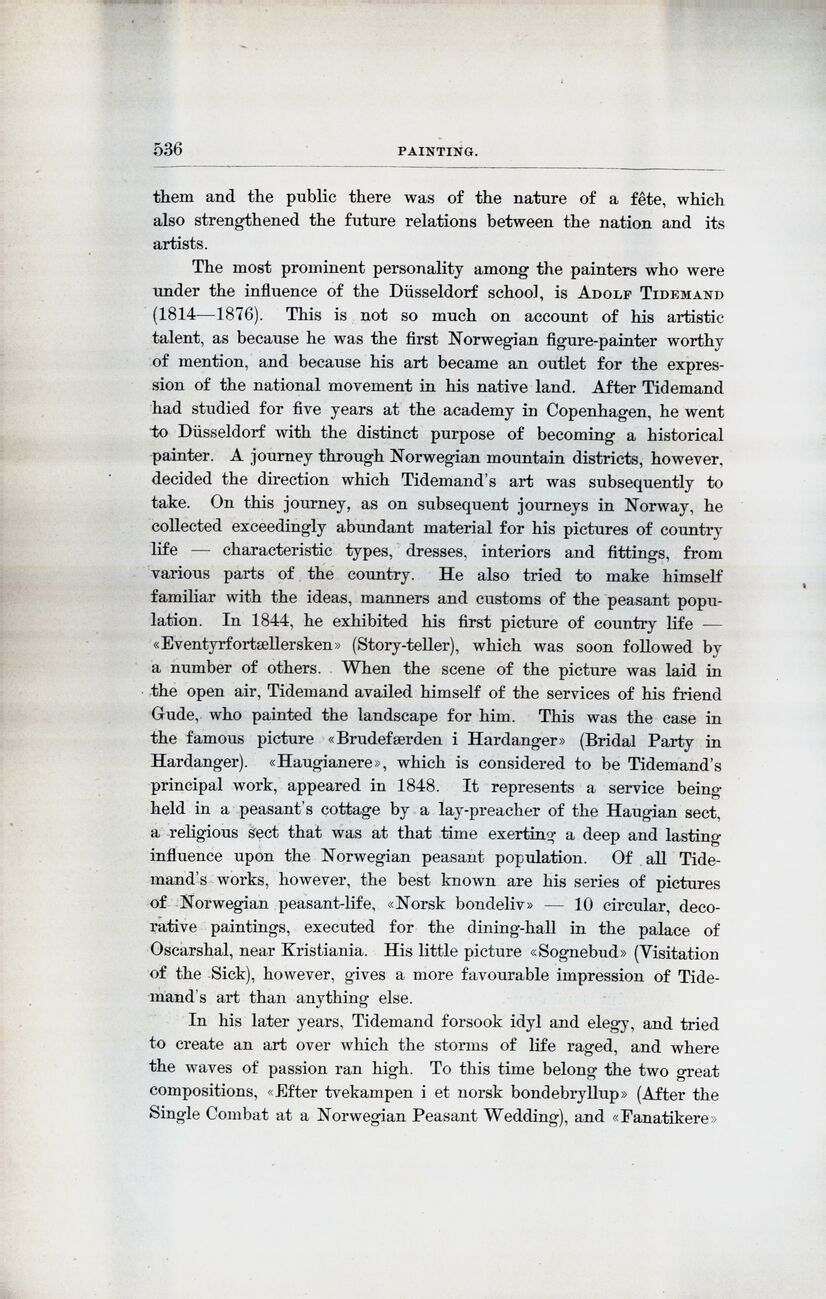
Full resolution (JPEG) - On this page / på denna sida - Painting, by Jens Thiis

<< prev. page << föreg. sida << >> nästa sida >> next page >>
Below is the raw OCR text
from the above scanned image.
Do you see an error? Proofread the page now!
Här nedan syns maskintolkade texten från faksimilbilden ovan.
Ser du något fel? Korrekturläs sidan nu!
This page has been proofread at least once.
(diff)
(history)
Denna sida har korrekturlästs minst en gång.
(skillnad)
(historik)
them and the public there was of the nature of a fête, which
also strengthened the future relations between the nation and its
artists.
The most prominent personality among the painters who were
under the influence of the Düsseldorf school, is Adolf Tidemand
(1814—1876). This is not so much on account of his artistic
talent, as because he was the first Norwegian figure-painter worthy
of mention, and because his art became an outlet for the
expression of the national movement in his native land. After Tidemand
had studied for five years at the academy in Copenhagen, he went
to Düsseldorf with the distinct purpose of becoming a historical
painter. A journey through Norwegian mountain districts, however,
decided the direction which Tidemand’s art was subsequently to
take. On this journey, as on subsequent journeys in Norway, he
collected exceedingly abundant material for his pictures of country
life — characteristic types, dresses, interiors and fittings, from
various parts of the country. He also tried to make himself
familiar with the ideas, manners and customs of the peasant
population. In 1844, he exhibited his first picture of country life
— «Eventyrfortællersken» (Story-teller), which was soon followed by
a number of others. When the scene of the picture was laid in
the open air, Tidemand availed himself of the services of his friend
Gude, who painted the landscape for him. This was the case in
the famous picture «Brudefærden i Hardanger» (Bridal Party in
Hardanger). «Haugianere», which is considered to be Tidemand’s
principal work, appeared in 1848. It represents a service being
held in a peasant’s cottage by a lay-preacher of the Haugian sect,
a religious sect that was at that time exerting a deep and lasting
influence upon the Norwegian peasant population. Of all
Tidemand’s works, however, the best known are his series of pictures
of Norwegian peasant-life, «Norsk bondeliv» — 10 circular,
decorative paintings, executed for the dining-hall in the palace of
Oscarshal, near Kristiania. His little picture «Sognebud» (Visitation
of the Sick), however, gives a more favourable impression of
Tidemand’s art than anything else.
In his later years, Tidemand forsook idyl and elegy, and tried
to create an art over which the storms of life raged, and where
the waves of passion ran high. To this time belong the two great
compositions, «Efter tvekampen i et norsk bondebryllup» (After the
Single Combat at a Norwegian Peasant Wedding), and «Fanatikere»
<< prev. page << föreg. sida << >> nästa sida >> next page >>